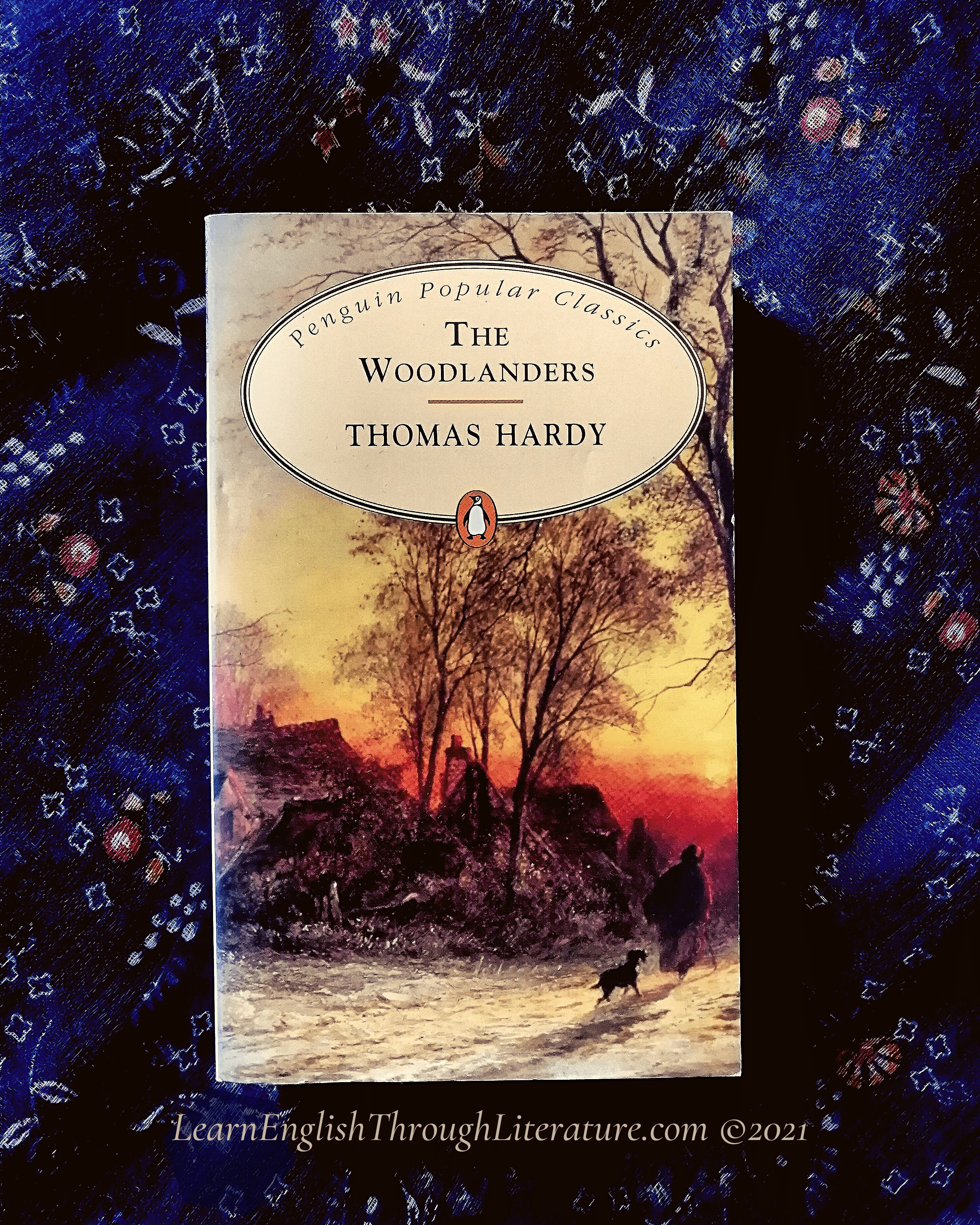As a proofreader and a tutor, the most common mistake I see on a daily basis is the misappropriation (placing in the wrong places) of apostrophes (‘) in English. Even native English speakers make this mistake from time to time!
If you have been reading my Lessons for a while, you may remember that I covered the basic rules surrounding its use in Lesson #138 (where we looked at its application in Elizabeth Barrett Browning’s poetry).
As it is such a common issue, it might be helpful to have another lesson with more examples. Today’s will be based on The Woodlanders (1887), a thoughtful novel by the British author Thomas Hardy (1840-1828).
We will consider the following here in the first part of our Lesson:
- Definitions of apostrophes of contraction and possessive apostrophes
- Spelling tips
- How these apostrophes are different from other punctuation marks
In Part 2 we will look at:
- Examples of the contractive apostrophe in Hardy’s novel
- Some more examples of the possessive apostrophe in the same book
…
📝 A SHORT OVERVIEW OF HARDY’S THE WOODLANDERS (1887)
📙 This novel – my second favourite Hardy classic – tells the story of a kind and rustic (plain, simple, from the countryside) farmer called Giles Winterborne who invests all his energy into improving his father’s lands. He has long loved (loved for a long time) his neighbour’s daughter, Grace Melbury, who has just returned home to their village, Hintock, after training to be a teacher in another district. Grace has become more sophisticated and elegant since Giles last spoke with her, and at first he is embarrassed to approach her and her family, who are beginning to think their daughter is too good for him. As Giles and Grace grow accustomed to each other (as they get used to each other) and value their friendship anew (again, afresh), neither of them are fully prepared for some fashionable individuals who arrive in Hintock and gradually alter (change) their quiet village life.
In the passage below, Giles Winterborne invites Grace Melbury and her parents over to dinner in his humble home. He is full of excitement and nervousness as he tries to cook and clean everything to perfection. His assistant, Creedle, is an old man who helped Giles’s father in the past, but now seems to make mistake after mistake as he helps Giles prepare the special dinner.
When you read this section of the story, you feel for (empathise with) Giles as he struggles with Creedle’s incompetence (the inability to do things correctly) and his own wish to treat Creedle with due respect as an old family friend.
Finally the guests arrive, and for Giles ‘the proof is in the pudding’ (that is, he will know if all his efforts paid off once the guests have eaten his dinner)!
This same passage is full of good examples of the apostrophe’s two main functions in English, which we will look at below.
…
📝 APOSTROPHES OF CONTRACTION & POSSESSIVE APOSTROPHES
#1 An apostrophe of contraction indicates that a letter has been removed to reflect the spoken sound. For example, haven’t shows us that a letter (‘o’) is missing to reflect how the words have not sound in spoken English.
This is very common in informal or spoken English. Of course I couldn’t let you, Grace!
✍️ That said, whenever writing something in formal or professional English, you should always write the words in full!
I will provide examples of commonly contracted words that use apostrophes in the second half of this Lesson.
#2 There is another kind of apostrophes called possessive apostrophes that appear after a noun to indicate that something belongs to it; for example, Winterborne’s look or Mrs Charmond’s home.
We can identify this kind of apostrophe easily as it has 3 parts:
- the noun itself, followed by
- the possessive apostrophe, followed by
- the letter ‘s’
…
📝 SPELLING TIPS FOR USING POSSESSIVE APOSTROPHES
- When the noun ends with an ‘s’ and is singular, you simply add another ‘s’ afterwards. For example, when talking about the chair of Giles (‘Giles’ is singular) we write Giles’s chair.
- When the noun ends with an ‘s’ because it is plural, you do not add an ‘s’. For example: the farmers’ lands.
- If a plural form noun does not end with an ‘s’, we treat it as we would a normal singular noun that doesn’t end with an ‘s’ either: e.g., the children’s toys.
- Lastly, with a noun that is a singular entity but has a plural form (for example, the United States), we use only a possessive apostrophe without an additional ‘s’: e.g., the United Arab Emirates’ capital.
…
📝 WHAT APOSTROPHES ARE NOT
✏️ Many people make the mistake of adding apostrophes to possessive pronouns, which do not need an apostrophe. Possessive pronouns – my, mine, your, his, her, hers, its, our, ours, your, yours, their, theirs – are all single words in themselves.
In summary: while common and proper nouns do use a possessive apostrophe, possessive pronouns do not.
✏️ Lastly, we use single quotation marks in standard British English when we are citing another author or text. (By contrast, American English uses double quotation marks (“) when quoting something).
Do not confuse single quotation marks that are being used to quote something with apostrophes – they might look the same, but they are different in function! ⚠️
Quotation marks must be placed in two places: at the beginning and at the end of a quoted passage. For example: ‘And I’ll help finish the tarts,’ said Grace, cheerfully.
…
✍️ As you can see, to use an apostrophe correctly we must understand what its purpose or function in a particular context is. ✍️
Join me in Part 2 of this Lesson as we look at some examples of apostrophes of contraction and possessive apostrophes drawn straight from Thomas Hardy’s work to illustrate the points just mentioned.




